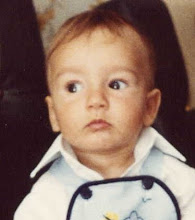
I could post today about my last trip, with pictures and all, but instead I will talk about mórmons. Fair trade I think... I hadn't seen any of these missionaries since I left Portugal, but today, at the airport when coming again to work, there they were, five or six elders and one hermana.
Until today, I thought all elders were somehow american, or at least with that gringo look, speaking foreign languages with a bad accent and terrifying innocent homes. But today, I saw chilean elders and that fascinated me! They keep the suit and the plates with their name, their last name, as apparently they refuse to use their first names. They even treat each other as elder X or hermana Y! The hermana was just a kid, with so much make-up on, that she looked more like someone who needed guidance than someone who was able to provide it.
When arriving to Antofagasta, another group of elders, identically dressed, naturally, were waiting for them with a big welcoming banner. They were just kids, giggling in suits, making the whole scene even more unreal. I don't know much about these people nor what they actually do, but they are indeed a lot of fun!
Until today, I thought all elders were somehow american, or at least with that gringo look, speaking foreign languages with a bad accent and terrifying innocent homes. But today, I saw chilean elders and that fascinated me! They keep the suit and the plates with their name, their last name, as apparently they refuse to use their first names. They even treat each other as elder X or hermana Y! The hermana was just a kid, with so much make-up on, that she looked more like someone who needed guidance than someone who was able to provide it.
When arriving to Antofagasta, another group of elders, identically dressed, naturally, were waiting for them with a big welcoming banner. They were just kids, giggling in suits, making the whole scene even more unreal. I don't know much about these people nor what they actually do, but they are indeed a lot of fun!






